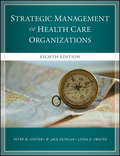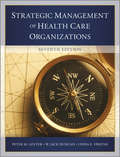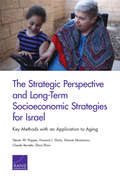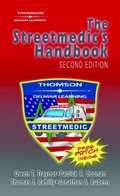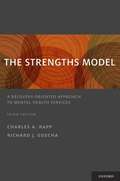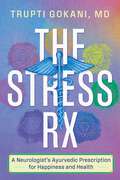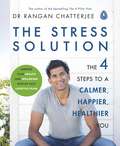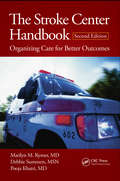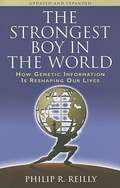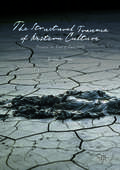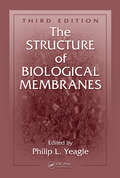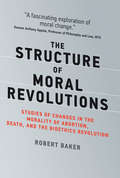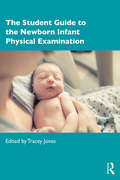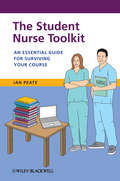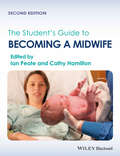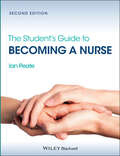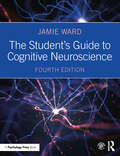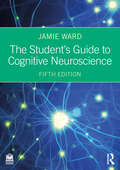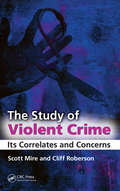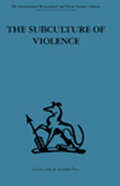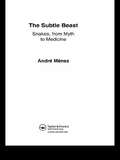- Table View
- List View
The Strategic Management of Health Care Organizations
by Peter M. Ginter W. Jack Duncan Linda E. SwayneA comprehensive guide to effective strategic management of health care organizations. Strategic Management of Health Care Organizations provides essential guidance for leading health care organizations through strategic management. This structured approach to strategic management examines the processes of strategic thinking, consensus building and documentation of that thinking into a strategic plan, and creating and maintaining strategic momentum – all essential for coping with the rapidly evolving health care industry. Strategic Management of Health Care Organizations fully explains how strategic managers must become strategic thinkers with the ability to evaluate a changing industry, analyze data, question assumptions, and develop new ideas. The book guides readers through the strategic planning process demonstrating how to incorporate strategic thinking and create and document a clear and coherent plan of action. In addition, the all-important processes of creating and maintaining the strategic momentum of the organization are fully described. Finally, the text demonstrates how strategic managers in carrying out the strategic plan, must evaluate its success, learn more about what works, and incorporate new strategic thinking into operations and subsequent planning. This strategic management approach has become the de facto standard for health care management as leadership and strategic management are more critical than ever in coping with an industry in flux. This book provides heath care management students as well as health care administrators with foundational guidance on strategic management concepts and practices, tailored to the unique needs of the health care industry. Included are a clear discussion of health services external analysis, organizational internal analysis, the development of directional strategies, strategy alternative identification and evaluation, and the development and management of implementation strategies providing an informative and insightful resource for anyone in the field. This new eighth edition has been fully updated to reflect new insights into strategic thinking, new methods to conceptualize and document critical environmental issues, practical steps for carrying out each of the strategic management processes, industry and management essentials for strategic thinkers , and new case studies for applying the strategic management processes. More specifically, readers of this edition will be able to: Create a process for developing a strategic plan for a health care organization. Map and analyze external issues, trends, and events in the general environment, the health care system, and the service area. Conduct a comprehensive service area competitor analysis. Perform an internal analysis and determine the competitive advantages and competitive disadvantages. Develop directional strategies. Identify strategic alternatives and make rational strategic decisions for a health care organization. Develop a comprehensive strategy for a health care organization. Create effective value-adding service delivery and support strategies. Translate service delivery and support plans into specific action plans. The health care industry’s revolutionary change remains ongoing and organizational success depends on leadership. Strategic management has become the single clearest manifestation of effective leadership of health care organizations and the strategic management framework’s strengths are needed now more than ever. The Strategic Management of Health Care Organizations provides comprehensive guidance and up-to-date practices to help leaders keep their organizations on track.
The Strategic Management of Health Care Organizations
by Peter M. GinterA structured strategic management approach is what's needed to tackle the revolutionary change the health care system has been experiencing. Today, health care organizations have almost universally embraced the strategic perspective first developed in the business sector and now have developed strategic management processes that are uniquely their own. Health care leaders have found that strategic thinking, planning, and managing strategic momentum are essential for coping with the dynamics of the health care industry. Strategic Management has become the single clearest manifestation of effective leadership of health care organizations.The 7th edition of this leading text has been revised and updated to include a greater focus on the global analysis of industry and competition; and analysis of the internal environment.It provides guidance on strategic planning, analysis of the health services environment (both internal and external) and lessons on implementation. It also looks at organizational capability, sustainability, CSR and the sources of organizational inertia and competency traps.
The Strategic Perspective and Long-Term Socioeconomic Strategies for Israel
by Claude Berrebi Steven W. Popper Howard J. Shatz Shira Efron Shmuel AbramzonRAND researchers supported a high-level Israeli government team tasked with improving long-term socioeconomic strategy for the state. This report highlights selected inputs made to the government team to summarize the essential mechanics and roles for bringing a strategic perspective to policy consideration. To show how one can use a strategic perspective in an analysis of policy choices, the report uses the example of an aging population.
The Strategic Perspective and Long-Term Socioeconomic Strategies for Israel: Key Methods with an Application to Aging
by Claude Berrebi Steven W. Popper Howard J. Shatz Shira Efron Shmuel AbramzonRAND researchers supported a high-level Israeli government team tasked with improving long-term socioeconomic strategy for the state. This report highlights selected inputs made to the government team to summarize the essential mechanics and roles for bringing a strategic perspective to policy consideration. To show how one can use a strategic perspective in an analysis of policy choices, the report uses the example of an aging population.
The Streetmedic's Handbook
by Owen Traynor Patrick Coonan Thomas Rahilly Jonathan RubensThe Streetmedic's Handbook, now in its second edition, is a concise field reference that presents essential information for pre-hospital emergencies that Paramedics and EMT's do not encounter on a daily basis. With its compact size or the new, separately sold downloadable PDA content, this resource makes an ideal companion and quick-reference tool for EMT's in the field. The Streetmedic's Handbook also lends itself well to the classroom setting for students who are studying emergency medicine. From the classroom to the field, those who use this book will appreciate the standardized, problem-oriented format that sets it apart from other quick-reference manuals.
The Strength of Bone
by Lucie WilkAn Amazon.ca Best Book of 2013: Top 100/Editors' Pick"A gorgeous debut."-JOSEPH BOYDEN, author of Through Black Spruce and The OrendaAt the hospital in Blantyre, Malawi, Bryce is learning to predict the worst. Racing heart: infection, probably malaria. He'll send Iris for saline. Shortness of breath? TB. Another patient rolled to the ward. And the round swellings, the rashes with dimpled centres, the small rough patches on a boy's foot? HIV. Iris will make him comfortable. They'll move on.Then there will be sleeplessness, rationed energy, a censuring of hope: the doctor's disease. Iris sees that one all the time.Henry Bryce has come to Blantyre to work off the grief he feels for his old life, but he can't adjust to the hopelessness that surrounds him. He relies increasingly upon Sister Iris's steady presence. Yet it's not until an accident brings them both to a village outpost that Bryce realizes the personal sacrifices Iris has made for her medical training, or that Iris in turn comes to fathom the depth of Henry's loss.The Strength of Bone is the story of a Western doctor, a Malawian nurse, and the crises that push both of them to the brink of collapse. With biting emotion and a pathological eye for detail, novelist and medical doctor Lucie Wilk demonstrates how, in a place where knowledge can frustrate as often as it heals, true strength requires the flexibility to let go.Advance Praise for The Strength of Bone"In supple, beautiful prose, Lucie Wilk recounts a doctor's struggle with technology and faith, and with the mysteries of death and love ... The Strength of Bone is an extraordinary look at the clash of worlds."-ANNABEL LYON, author of The Golden Mean and The Sweet GirlLucie Wilk grew up in Toronto and completed her medical training in Vancouver. Her short fiction has been nominated for the McClelland & Stewart Journey Prize Anthology, longlisted for a CBC Canada Writes literary prize, and has appeared in Descant, Prairie Fire and Shortfire Press. She is working toward an MFA in Creative Writing at the University of British Columbia. She practices medicine and lives with her husband and two children in London, UK.
The Strengths Model: A Recovery-Oriented Approach to Mental Health Services
by Charles A. Rapp Richard J. GoschaPresenting a compelling alternative to the traditional medical approach, The Strengths Model demonstrates an evidence-based approach to helping people with a psychiatric disability identify and achieve meaningful and important life goals. Since the first edition of this classic textbookappeared, the strengths model has matured into a robust vision of mental health services. Both a philosophy of practice and a specific set of tools and methods, the strengths model is designed to facilitate a recovery-oriented partnership between client and practitioner. This completely revisededition charts the evolution of the strengths model, reviews the empirical support behind it, and illustrates the techniques and values that guide its application. Features new to this edition:* An extensive update of the strengths literature, focusing on recovery as the dominant paradigm in mental health services* Richly drawn case vignettes demonstrating the application of methods* Integration of empirical research and consumers' own experiences* Completely updated strengths assessment and fidelity scales* In-depth discussions and examples guide practitioners from theory to applied practice* Descriptions of how to teach and successfully supervise large-scale implementations of strengths model workFor social workers and other mental health specialists working with clients to move beyond the disabling effects of mental illness to a life filled with meaning, purpose, and identity, this remains the crucial text.
The Stress Rx: A Neurologist's Ayurvedic Prescription for Happiness and Health
by Dr. Trupti GokaniWhat if good health—body, mind, and spirit—came down to what we think and how we manage stress?According to the Centers for Disease Control and Prevention (CDC), stress is the number one cause of disease. Yet most people have no idea how stress has thrown their lives off-balance, disconnecting them from who they really are. In The Stress Rx: A Neurologist's Ayurvedic Prescription for Happiness and Health, Dr. Trupti Gokani uses the ancient wisdom of ayurveda and her Three Brain Model(TM) to show you how to find true, holistic health. As a neurologist who has spent over two decades in clinical practice, Dr. Gokani has a powerful message to share. What if, instead of changing your diet, adding supplements, or more exercise, you focused on shifting your brain programs? What if changing how you and your brain perceive stress could take care of 80 to 90 percent of your struggles? If this shift could reduce your risk of disease and improve your longevity far more than any dietary change, pill, or exercise routine, would you be interested in giving it a try? The Stress Rx will show you how.
The Stress Solution: The 4 Steps to a Calmer, Happier, Healthier You
by Dr Rangan ChatterjeeFROM THE SUNDAY TIMES BESTSELLING AUTHOR OF HAPPY MIND, HAPPY LIFE 'One of the most influential doctors in the UK (...) I could talk to Rangan all day (...) he's amazing'- Chris EvansBecome a calmer, happier and healthier you with Dr Rangan Chatterjee's The Stress Solution. In this book, Dr Rangan Chatterjee, draws on two decades of practice to show you how to make easy-to-follow and sustainable health and lifestyle improvements to your everyday life. Top tips include:· How to breathe to feel happier· How to schedule in "me time"· How to become less addicted to your phone· How to find and ignite your passionAt no extra cost, learn how to slow down and feel calmer and more in control of your life by investing in your long-term health.'Small changes make a big difference - we can all benefit from reading this' - Jamie Oliver
The Stroke Book
by MPH Michel T. Torbey Faha Magdy H. SelimA concise and practical reference that will help physicians become more comfortable with decision making and management of the critically ill cerebrovascular patient. Contributors from leading stroke centers cover a wide range of common conditions such as ischemic and hemorrhagic strokes, subarachnoid hemorrhage, and aneurysms, and provide focused protocols for assessing and treating patients in the emergency room, intensive care unit, or hospital floor. The book is designed for use by busy professionals who need quick answers, and chapters are packed with algorithms and summary tables providing immediate access to key information. A bound-in CD allows users to download the text onto a computer or handheld device.
The Stroke Center Handbook: Organizing Care for Better Outcomes, Second Edition
by Marilyn M. Rymer Debbie Summers Pooja KhatriSince publication of the first edition of this book, new treatments have become available in acute intervention for stroke and new evidence has been uncovered regarding prevention and neurorehabilitation. Designed for the entire team at any stroke center, including physicians, nurses, therapists, and administrators, The Stroke Center Handbook: Orga
The Strongest Boy in the World: How Genetic Information Is Reshaping Our Lives (Updated and Expanded Edition)
by Philip R. ReillyThis updated edition includes an essay about the fast-moving and controversial field of personal genomics. In the essay, Reilly explains how new, cutting-edge technologies have facilitated the rapid discovery of genetic markers associated with ailments such as macular degeneration, heart disease, and schizophrenia. He describes how the same powerful technologies can be used to interpret the DNA sequence of anyone in the world--who can afford it. But how valuable are the data obtained from these tests? Will "personalized medicine" really improve our health and well-being? And at what cost? Reilly's new essay is a worthy addition to his entertaining and informative collection of stories on topics such as genetics and the future of sports, the evolutionary origins of humans, the mysteries of genetic diseases, the similarities between dogs and people, the impact of genetic engineering on what we eat, and the ethical dimensions of stem cell research.
The Structural Trauma of Western Culture
by Yochai AtariaThis book describes the diverse manifestations of trauma and the ways in which trauma has shaped--and dismantled--our culture. Yochai Ataria describes how we are addicted to trauma and have become both its avid producers and consumers. Consequently, the culture in which we live has become posttraumatic in the deepest sense. This is apparent in the products that have shaped and continue to shape Western culture, ranging from the biblical sacrifice of Isaac to Francis Ford Coppola's Apocalypse Now. Ataria exposes the primary attributes of this so-called posttraumatic culture: sacrifice through action, an uncontrolled lust for blood, an inability to speak and describe things in words, a sense of foulness and alienation, emotional death, imperviousness, separation, and an overwhelming sense of exile.
The Structure of Biological Membranes
by Philip L. YeagleBiological membranes provide the fundamental structure of cells and viruses. Because much of what happens in a cell or in a virus occurs on, in, or across biological membranes, the study of membranes has rapidly permeated the fields of biology, pharmaceutical chemistry, and materials science. The Structure of Biological Membranes, Third Edition pro
The Structure of Moral Revolutions: Studies of Changes in the Morality of Abortion, Death, and the Bioethics Revolution (Basic Bioethics)
by Robert BakerA theoretical account of moral revolutions, illustrated by historical cases that include the criminalization and decriminalization of abortion and the patient rebellion against medical paternalism.We live in an age of moral revolutions in which the once morally outrageous has become morally acceptable, and the formerly acceptable is now regarded as reprehensible. Attitudes toward same-sex love, for example, and the proper role of women, have undergone paradigm shifts over the last several decades. In this book, Robert Baker argues that these inversions are the product of moral revolutions that follow a pattern similar to that of the scientific revolutions analyzed by Thomas Kuhn in his influential book, The Structure of Scientific Revolutions. After laying out the theoretical terrain, Baker develops his argument with examples of moral reversals from the recent and distant past. He describes the revolution, led by the utilitarian philosopher Jeremy Bentham, that transformed the postmortem dissection of human bodies from punitive desecration to civic virtue; the criminalization of abortion in the nineteenth century and its decriminalization in the twentieth century; and the invention of a new bioethics paradigm in the 1970s and 1980s, supporting a patient-led rebellion against medical paternalism. Finally, Baker reflects on moral relativism, arguing that the acceptance of “absolute” moral truths denies us the diversity of moral perspectives that permit us to alter our morality in response to changing environments.
The Student Guide to the Newborn Infant Physical Examination
by Tracey JonesThis concise guide offers a comprehensive step-by-step framework for midwifery students to learn about all aspects of the newborn infant physical examination (NIPE), a screening assessment completed on all babies between 6 and 72 hours of age. The Student Guide to the Newborn Infant Physical Examination encourages the reader to approach the examination in a system-based format, with case studies and practice tips to support learning. The book offers: • Evidence-based, well-illustrated assessment tools, which take into account the national screening committee standards, and is written by authors with both academic and clinical experience; • A clear direction on how to perform the NIPE in practice while exploring the wider context of screening in healthcare today; • Coverage of the changing role of the midwife, and the importance of understanding the whole context of the mother’s care, health promotion and starting the practitioner-parent conversation. The Student Guide to the Newborn Infant Physical Examination is a core text for all pre-registration midwifery students and a useful resource for qualified midwives, neonatal nurses and practice nurses.
The Student Nurse Toolkit
by Ian PeateYour very own companion to any pre-registration nursing course!Packed with advice, hints and tips, this essential, practical guide will orientate and guide you through your nursing course even before you start. Written in a straightforward, no-nonsense style, this Toolkit is full of strategies and help for surviving and succeeding on your pre-registration nursing course, and addresses all the key issues and concerns you may face, including:How to get the most out of your clinical placementThe nursing terminology you need to know - including NMC standardsHow to create a professional PortfolioHow to achieve a healthy work-life balanceHow to develop an effective relationship with your mentorWith case studies from real students, hands-on activities and suggestions for further reading, this is THE essential survival guide for your nursing course!
The Student's Guide to Becoming a Midwife
by Ian Peate Cathy HamiltonThe Student's Guide to Becoming a Midwife is essential reading for all student midwives. Now updated to include the latest 2012 NMC Midwifery Rules and Standards and a brand new chapter on the midwife and public health, this comprehensive resource provides a wide range of need-to-know information for student midwives, including: Effective communication and documentation Confidentiality Interdisciplinary working The fundamentals of antenatal, intrapartum, and postnatal care Assessment and examination of the new-born baby Medicines Public health Clinical decision-making Evidence-based practice With case studies, words of wisdom from current midwives and a range of activities and self-test questions throughout - making it easy to learn and understand key concepts - The Student's Guide to Becoming a Midwife is the ideal companion for students throughout their course.
The Student's Guide to Becoming a Nurse
by Ian PeateThe Student's Guide to Becoming a Nurse is an essential guide for all student nurses who want to become competent practitioners. It explores the knowledge, skills and attitudes that all pre-registration nursing students must acquire by the end of their programme of study, enabling them to become confident, successful nurses.Thoroughly re-written and updated to include the latest 2010 NMC standards for pre-registration nursing education, this invaluable textbook is divided into four key sections: Professional values, Communication and interpersonal skills, Nursing practice and decision making, and Leadership, management and team working. With case studies, top tips, activities and questions throughout, The Student's Guide to Becoming a Nurse is ideal for all pre-registration nurses and those about to qualify.
The Student's Guide to Cognitive Neuroscience
by Jamie WardReflecting recent changes in the way cognition and the brain are studied, this thoroughly updated fourth edition of this bestselling textbook provides a comprehensive and student-friendly guide to cognitive neuroscience. Jamie Ward provides an easy-to-follow introduction to neural structure and function, as well as all the key methods and procedures of cognitive neuroscience, with a view to helping students understand how they can be used to shed light on the neural basis of cognition. The book presents a comprehensive overview of the latest theories and findings in all the key topics in cognitive neuroscience, including vision, hearing, attention, memory, speech and language, numeracy, executive function, social and emotional behavior and developmental neuroscience. Throughout, case studies, newspaper reports, everyday examples and studentfriendly pedagogy are used to help students understand the more challenging ideas that underpin the subject. New to this edition: Increased focus on the impact of genetics on cognition New coverage of the cutting-edge field of connectomics Coverage of the latest research tools including tES and fNIRS and new methodologies such as multi-voxel pattern analysis in fMRI research Additional content is also included on network versus modular approaches, brain mechanisms of hand-eye coordination, neurobiological models of speech perception and production and recent models of anterior cingulate function. Written in an engaging style by a leading researcher in the field and presented in full color including numerous illustrative materials, this book will be invaluable as a core text for undergraduate modules in cognitive neuroscience. It can also be used as a key text on courses in cognition, cognitive neuropsychology, biopsychology or brain and behavior. Those embarking on research will find it an invaluable starting point and reference. This textbook is supported by an extensive companion website for students and instructors, including lectures by leading researchers, links to key studies and interviews, interactive multiple-choice questions and flashcards of key terms.
The Student's Guide to Cognitive Neuroscience
by Jamie WardReflecting recent changes in the way cognition and the brain are studied, this thoroughly updated fifth edition of this bestselling textbook provides a comprehensive and student-friendly guide to cognitive neuroscience. Jamie Ward provides an easy-to-follow introduction to neural structure and function, as well as all the key methods and procedures of cognitive neuroscience, with a view to helping students understand how they can be used to shed light on the neural basis of cognition.The book presents a comprehensive overview of the latest theories and findings in all the key topics in cognitive neuroscience, including vision, hearing, attention, memory, speech and language, executive function, social and emotional behavior, and developmental neuroscience. Throughout, case studies, newspaper reports, everyday examples, and student-friendly pedagogy are used to help students understand the more challenging ideas that underpin the subject. This edition features expanded coverage of consciousness, a combined chapter on literacy and numeracy, and increased coverage of brain networks and computational approaches.Written in an engaging style by a leading researcher in the field and presented in full color including numerous illustrative materials, this book will be invaluable as a core text for undergraduate modules in cognitive neuroscience. It can also be used as a key text on courses in cognition, cognitive neuropsychology, biopsychology, or brain and behavior. Those embarking on research will find it an invaluable starting point and reference.This textbook is supported by an extensive collection of free digital resources for students and instructors, including lectures by leading researchers, links to key studies and interviews, multiple-choice questions, and interactive flashcards to test your knowledge. Visit the Instructor & Student Resources website at routledgelearning.com/wardcognitiveneuroscience.
The Study of Anatomy in Britain, 1700–1900 ("The Body, Gender and Culture" #13)
by Fiona HuttonHutton looks at Manchester and Oxford to provide a comparative history of anatomical study. Using the Anatomy Act as a focal point, she examines how these two cities dealt with the need for bodies over two centuries.
The Study of Violent Crime: Its Correlates and Concerns
by Cliff Roberson Scott MireViolence is a complex subject that is rooted in a multitude of disciplines, including not only criminology but also psychology, sociology, biology, and other social science disciplines. It is only through understanding violence as a concept that we can hope to respond to it appropriately and to prevent it. The Study of Violent Crime: Its Correlates
The Subculture of Violence: Towards an Integrated Theory in Criminology
by Marvin E. Wolfgang Franco FerracutiTavistock Press was established as a co-operative venture between the Tavistock Institute and Routledge & Kegan Paul (RKP) in the 1950s to produce a series of major contributions across the social sciences. This volume is part of a 2001 reissue of a selection of those important works which have since gone out of print, or are difficult to locate. Published by Routledge, 112 volumes in total are being brought together under the name The International Behavioural and Social Sciences Library: Classics from the Tavistock Press. Reproduced here in facsimile, this volume was originally published in 1967 and is available individually. The collection is also available in a number of themed mini-sets of between 5 and 13 volumes, or as a complete collection.
The Subtle Beast: Snakes, From Myth to Medicine
by Andre MenezThe Subtle Beast: Snakes, from Myth to Medicine introduces you to the complex and absorbing world of these mysterious creatures. Each of the fourteen chapters in this volume can be read independently, but read together they trace a fascinating journey from the macroscopic features of snakes to the molecular description of their venom components. <B
